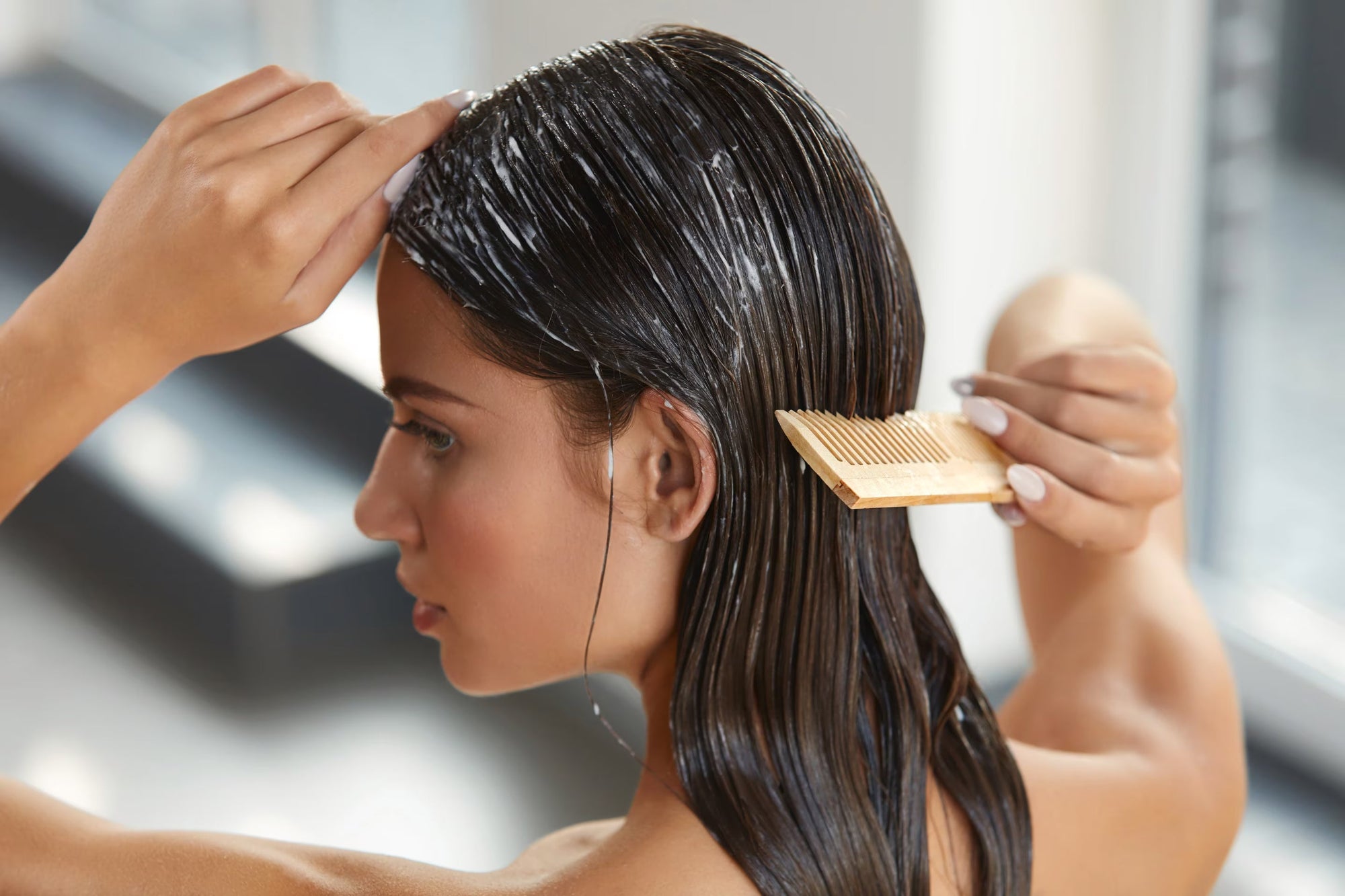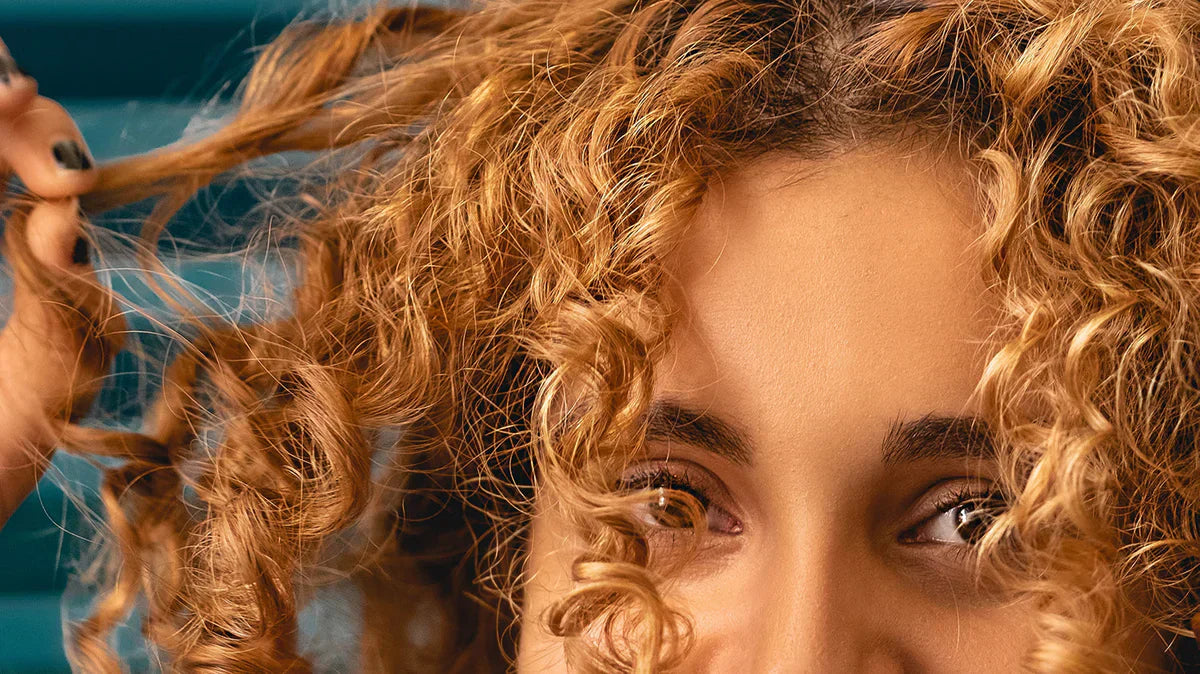Healthy hair is about balance. When one part of that balance slips, your strands start showing it. Some days they feel rough or dry. Other days they’re soft but weak. That’s when most people start guessing and trying random products. But the real fix usually comes down to one question: does your hair need moisture or protein?
It sounds simple, but it changes everything once you understand it. Most people use masks and conditioners without knowing which side their hair is missing. That’s why the results don’t always last. When you learn how to read your hair’s signs, you can stop wasting time and start getting real results.
So let’s keep it easy and talk through what each one does and how to tell the difference.
What moisture does for hair
Moisture gives your hair its softness and movement. It helps every strand bend instead of break. It’s what makes curls bounce and straight hair flow.
When hair has enough moisture, it feels flexible and smooth. You can run your fingers through it without snagging. It doesn’t puff up the moment you step outside.
You start losing that moisture when you do things like:
- Use a lot of heat on your hair
- Wash too often with harsh shampoos
- Skip conditioner because you’re in a rush
- Forget heat protectant
- Overuse protein treatments
If your hair is dry or dull most of the time, that’s usually the problem.
Moisture products are often loaded with things like aloe, glycerin, shea butter, and lightweight oils. They don’t rebuild your hair; they feed it hydration so it stays smooth and soft.
A good option from the shop is the KERAGEN Deep Hydrating Mask. It works well for dry, frizzy ends and adds back that slip and shine that most hair loses after too much styling.
What protein does for hair
Protein is what makes hair strong. It fills the tiny cracks inside the strand that show up after chemical or heat damage. When hair loses protein, it loses structure.
Imagine your hair as a rope. If some of the fibers are broken or missing, the rope goes limp and weak. That’s what happens to your hair without enough protein.
You might need protein if you notice:
- Hair breaks easily even when it’s soft
- It stretches like rubber when wet
- It won’t hold curls or shape
- It feels thin or weak
Protein treatments repair that. They use keratin, collagen, or silk amino acids to build strength back into the strand. But it’s not something you use all the time. Too much protein makes hair stiff and hard.
When you notice signs of weakness, a product Protein Mask helps a lot. It’s made for color-treated or heat-styled hair and gives it a bit of life and body again.
Moisture vs protein: what’s the real difference
Here’s the simplest way to see it:
| Moisture | Protein | |
|---|---|---|
| Purpose | Keeps hair soft, hydrated | Makes hair strong and less stretchy |
| Texture | Smooth and flexible | Firm and resilient |
| Needed when | Hair feels dry or frizzy | Hair feels limp or breaks easily |
| Common sources | Aloe, glycerin, oils | Keratin, silk, collagen |
One doesn’t replace the other. You need both, just not at the same time. When moisture runs too high, hair turns mushy. When protein builds up too much, it turns rough. Balance is what makes hair look healthy.
A small at-home test
You can check what your hair wants in less than a minute.
Take a single strand of clean, damp hair. Gently stretch it between your fingers.
- If it stretches a lot then snaps → you’re short on protein.
- If it barely stretches and breaks right away → you’re missing moisture.
- If it stretches a little and bounces back → you’re balanced.
Try this every few weeks. Your hair changes with weather, heat use, and products, so balance can shift.
If you want to dive deeper into how hair structure works and why protein loss happens, the American Academy of Dermatology has a simple breakdown of hair damage and care habits you can check here. It explains how daily styling, heat, and chemical treatments affect both the outer and inner layers of your hair.
When hair needs more moisture
Signs:
- Feels rough and dry
- Tangles often
- Breaks when brushed
- Looks dull
- Doesn’t move naturally
Fix:
Start using hydrating masks twice a week. Switch to a gentle shampoo. Avoid heavy protein products for a while.
The KERAGEN Deep Hydrating Mask is a solid choice here. It softens dry ends, smooths frizz, and brings that light bounce back. If your hair soaks up conditioner fast and still feels dry, this one can help balance that out.
Also, keep an eye on water temperature. Hot water strips oils from your hair faster than you think.
When hair needs more protein
Signs:
- Hair feels soft but limp
- Stretches when wet
- Snaps after coloring or styling
- Doesn’t hold volume or curl
Fix:
Use a protein mask every two weeks. Too often, and you’ll swing the other way. Pair it with a moisture mask a few days later to stay balanced.
Once strength returns, shift back to moisture care for maintenance.
A sample balance routine
If you’re not sure what your hair wants, alternate.
- Week 1: Hydration mask
- Week 2: Protein mask
- Week 3: Hydration again
Keep watching how your hair reacts. If it starts to feel too firm, skip protein for a bit. If it’s soft but flat, bring it back.
Also, always use a heat protectant before blow-drying or straightening. That one small habit saves most of the progress you make with treatments.
You can also read a full step-by-step routine in our Hair Care Routine Guide.
Quick quiz: what does your hair need today?
After washing, my hair feels:
A. Rough and frizzy
B. Too soft or stretchy
C. Normal and balanced
When I brush it:
A. It breaks or tangles
B. It feels weak or flat
C. It behaves fine
When it’s wet:
A. Snaps right away
B. Stretches too much
C. Just enough stretch
After conditioning:
A. Still dry
B. Coated and heavy
C. Smooth but light
If you picked mostly A, go for moisture.
If you picked mostly B, go for protein.
If you got C, keep what you’re doing. You’re balanced.
Keep it steady
Hair balance isn’t something you fix once. It shifts with seasons and habits. Summer heat, color treatments, or even new shampoos can change how your hair behaves.
A few reminders:
- Use masks once a week, not every day
- Focus product on mid-lengths and ends
- Sleep on a silk or satin pillowcase
- Avoid brushing wet hair too hard
- Clarify once a month if you use a lot of products
Little steps make a big difference over time.
If your hair feels “off”
Sometimes hair just stops responding. It feels wrong no matter what you use. That’s usually buildup or imbalance. Try a clarifying shampoo, then test again.
If it feels rough after washing, add moisture next time. If it feels soft but breaks easily, give it protein. Alternate until it feels both smooth and strong again.
Hair doesn’t repair overnight, but it always responds to consistent care.
Simple truth
When you balance moisture and protein, your hair behaves better, styles easier, and stays healthy longer. Once you learn what it’s asking for, you stop fighting with it.
For dry or brittle hair, the KERAGEN Argan Smoothing Cream is an easy way to restore softness and shine.
Balanced hair doesn’t just look better. It feels better every day.
FAQs
1. Can I mix protein and moisture masks together?
No need. Use them separately so each one can do its job properly.
2. How will I know if I’ve used too much protein?
Your hair will feel stiff and dry. Give it a week of moisture masks to reset.
3. Can fine hair use protein masks?
Yes, but go for lighter ones and space them out. Once every three to four weeks works.
4. My hair gets greasy fast after moisturizing. What should I do?
Use less product and apply only to ends. You can also switch to water-based creams.
5. How often should I do the strand test?
Once a month or after any major change like coloring or bleaching.



